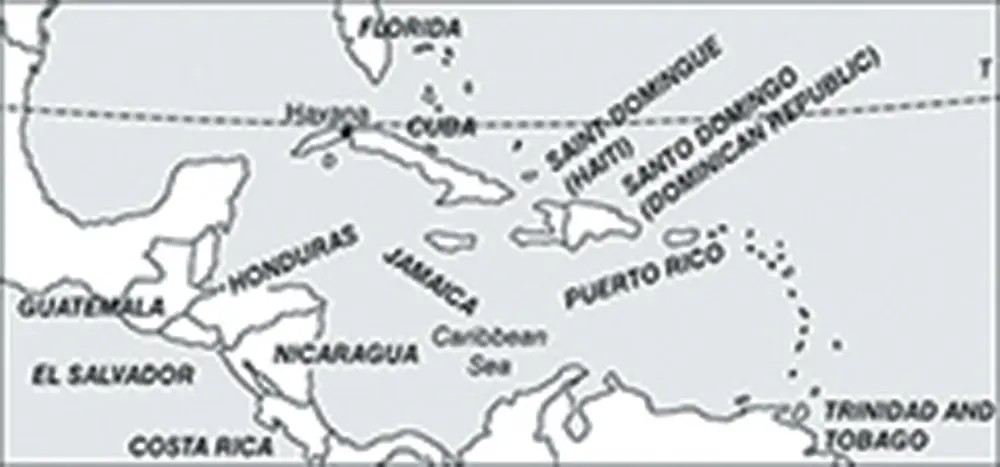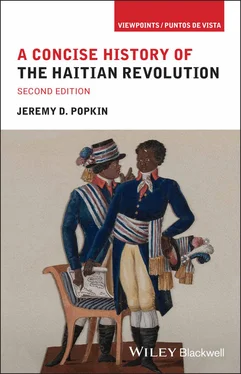In this fifth volume in the series, Professor Jeremy Popkin provides an interpretation of the Haitian Revolution of 1791, at once a massive slave revolt and the second successful independence movement in the New World. The volume provides a clear and concise introduction to a historical process that, by raising the twin specters of freedom and violence, reverberated through the Atlantic world. Popkin discusses the legacy of the Haitian Revolution in global terms: the movement profoundly shaped other independence movements in Latin America and the Caribbean, and affected the political discourse in early nineteenth‐century Europe. A singular strength of this book is its chronological scope, encompassing the nineteenth century and beyond. The author makes the case that the Haitian Revolution was a process of global historical significance, and that it deserves equal billing with the much more widely studied revolutions in France and British North America.
Jürgen Buchenau
University of North Carolina, Charlotte

Map 1Saint-Domingue/Haiti and the Caribbean.
Source : Adapted from Chomsky, A History of the Cuban Revolution (Oxford: Wiley‐Blackwell, 2010).
On 16 August 1791, a building on one of the hundreds of sugar plantations in France’s wealthy Caribbean colony of Saint-Domingue, today’s independent Republic of Haiti, was set on fire. The local white colonists immediately suspected one of the plantation’s enslaved blacks. Under interrogation, he made a startling confession. “The most trusted slaves on the neighboring plantations and those in the adjacent districts had formed a plot to set fire to the plantations and to murder all the whites,” 1he claimed. The authorities in the nearby port of Cap Français, the largest city in the colony, dismissed the idea that uneducated black captives could have conceived such a scheme. For years, a small minority of whites had successfully exploited the labor of a far larger enslaved population; the whites could not imagine that the blacks they had treated with such contempt for so long were capable of organizing themselves to overthrow their oppressors. Less than a week later, on the night of 22–23 August 1791, the white colonists learned how wrong they were. Just as the suspect arrested for arson had said, bands of blacks attacked plantations in Saint-Domingue’s richest sugar-growing area, setting fire to the crops and killing or driving out their white owners and overseers. It was the start of a movement that would culminate almost 13 years later, on 1 January 1804, when a leader who had once been enslaved, Jean-Jacques Dessalines, proclaimed the independence of the nation of Haiti.
The Haitian Struggle for Freedom
The success of the 13-year-long insurrection in the French half of the Caribbean island of Hispaniola, where Christopher Columbus had landed in 1492 and begun the era of European colonialism in the Americas, showed that the movement for freedom in America, begun by the white population of the British colonies in North America in 1776, had leaped across the boundary of race. For the first time, a population of African origin overthrew its white rulers. The main leader of the Haitian movement, Toussaint Louverture, proved that a black man born into slavery could command armies and govern as effectively as any white man. Most importantly for the future of the Americas and the entire Atlantic world, the Haitian Revolution struck a blow against the institutions of slavery and racial hierarchy. The constitution of the United States, drawn up in 1787, spoke of freedom, but left hundreds of thousands of blacks in servitude; even free black people were denied the full rights of citizens. In contrast, the Haitian constitution of 1805 proclaimed that “slavery is abolished forever” and that “all distinctions of color among members of the same family must necessarily stop.” The Haitian Revolution’s stand against slavery and racial discrimination made it the most radical of the American revolutionary insurrections against European rule. No study of the revolutionary era that laid the basis for the modern world can afford to ignore this movement.
Present-day Haiti is a small spot on the map of the Americas: it occupies less than half of the island of Hispaniola that it shares with the Spanish-speaking Dominican Republic. Particularly since the devastating earthquake of 12 January 2010 that killed more than 200,000 people and reduced its capital city of Port-au-Prince to rubble, media images of Haiti emphasize the country’s poverty, environmental problems, and endemic political turmoil. Two hundred years ago, however, the territory that is now Haiti played a central role in world affairs. Ceded to France by Spain in 1697, Saint-Domingue had grown in less than a century to become the most profitable of all New World colonial settlements. In 1789, when the enslaved population in the 13 United States was only 650,000, Saint-Domingue had nearly 500,000 enslaved laborers and produced almost half of the entire world’s supply of sugar and coffee, as well as valuable crops of cotton and indigo. At the moment when the Haitian Revolution began, Saint-Domingue was the biggest market for African captives, some 30,000 of whom were imported every year to keep its economy going, and the wealth of the colony’s plantation-owners eclipsed that of even the richest Virginia and South Carolina planters. Vital to the prosperity of France, western Europe’s largest country, Saint-Domingue was also a crucial trading partner for the United States: Yankee ships brought flour, salt meat and fish to feed the island’s population, and took home molasses to supply New England’s rum distilleries. The progress of the Haitian uprising was followed with passion and anxiety throughout the Atlantic world.
At the moment when the Haitian Revolution began in August 1791, the world’s attention was focused on the revolutionary upheaval in France itself. Two years earlier, after the storming of the Bastille in Paris on 14 July 1789, the legislators of France’s revolutionary National Assembly had issued their famous Declaration of the Rights of Man and Citizen, proclaiming that “men are born and remain free and equal in rights.” The uprising in Saint-Domingue forced them to consider whether their principles applied to the 800,000 enslaved blacks in France’s overseas colonies. Torn between their assertion that freedom was a universal human right and their equally strong belief that France needed overseas possessions to maintain its own power and prosperity, the French revolutionaries wrestled painfully with the problem of reconciling their principles with their country’s national interest. In 1799 a successful general, Napoleon Bonaparte, seized power in France. In his mind, the liberty the French revolutionaries had proclaimed had proved to be incompatible with political stability and social order. He had even less sympathy for the attempt to build a free multi-racial society in France’s Caribbean colonies. His attempt to reimpose white rule in Saint-Domingue in 1802–3 provoked the most violent phase of the Haitian Revolution. The defeat the island’s population inflicted on his forces foreshadowed the disasters in Spain and Russia that would lead to his downfall in 1814.
Like revolutionary France, many other parts of the Atlantic world were powerfully affected by the events of the Haitian Revolution. In addition to its importance for American commerce, the fate of slavery in Saint-Domingue was a major concern for slaveowners in the southern states. The flight of white colonists from the island produced the first refugee crisis in the history of the United States, and the support the United States gave to the black leader Toussaint Louverture in the late 1790s was the first example of American intervention beyond its own borders. Napoleon’s defeat in 1803 led France to offer to sell its territorial claims in North America to the young American republic. This “Louisiana Purchase” opened the way for the westward expansion of the United States and its growth into a continental power. Former residents of Saint-Domingue made up much of the early population of New Orleans and profoundly influenced that region’s distinctive “creole” culture. Blacks in the United States saw in the success of the Haitian movement proof that members of their race could achieve freedom; the Haitian example inspired some of the slave conspiracies of the early nineteenth century and gave courage to those who campaigned for the rights of their people through legal means.
Читать дальше













